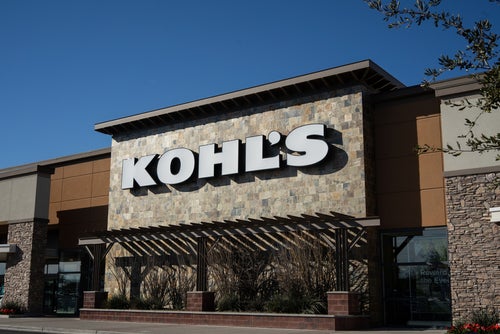
According to the New York Post, the owners of US department store chain, JCPenney, have made an offer to acquire Kohl’s, its biggest rival, in a deal that could be worth over US$8.6bn. But, GlobalData’s retail analyst Neil Saunders, believes a successful bid would put a lot on the owners’ plate given the turnaround of JCPenney since they rescued it from bankruptcy in December 2020 “is a very long way from being completed”.
He also points out that “Kohl’s needs a significant amount of work as it tries to revitalise its fortunes.”
The New York Post claims Simon Property Group and Brookfield Asset Management have offered to buy Kohl’s for $68 a share and would keep the two brands separate while streamlining operations to cut costs behind the scenes. As a result, it is believed that if the bid is successful, the new owners would aim to cut Kohl’s costs by $1bn over the next three years.
The news publication’s source also claims there would be a single management team in place to operate both JCPenney and Kohl’s while merging the IT systems so one unit would be in charge of the chains. Plus, the companies would have all private apparel manufactured by the same in-house label.
Just Style had not received comment from either Simon Property Group or Brookfield Asset Management prior to publication.
Saunders explains that an offer by Simon and Brookfield would be an interesting development in the battle for the department store chain, which put itself up for sale earlier this year.

US Tariffs are shifting - will you react or anticipate?
Don’t let policy changes catch you off guard. Stay proactive with real-time data and expert analysis.
By GlobalDataSaunders points out that on the surface, the offer from Simon and Brookfield would be far more attractive than other bids on the table, if only because the duo would continue to run Kohl’s as a retailer and would bring some of their retail and operational expertise to the chain.
He adds: “There would also be some synergies between JC Penney – the other department store chain already owned by the group – and Kohl’s which would allow the new owners to cut costs. These savings would likely be at the back end, with a focus on operations and logistics.”
Plus, he says: “As the two chains don’t have a great deal of store overlap, any deal would give Simon and Brookfield a presence in many locations that JC Penney doesn’t serve.”
He concludes: “All that said, Kohl’s and JC Penney are distinct brands with distinct propositions. There is a limit to how much the two could be merged without sacrificing the integrity of each brand. Merging things like buying units and marketing functions would make little sense and would be a strategic mistake. This also underlines that creating a bigger business of two struggling department stores would not magically transform the fortunes of either.”
Kohl’s struggled during the pandemic and in September 2020 it cut around 15% of its corporate workforce in a bid to cut costs. While JCPenney reduced its workforce by about 650 positions in May 2021 as part of Simon Property Group and Brookfield Asset Management’s turnaround plan for the department store chain.



